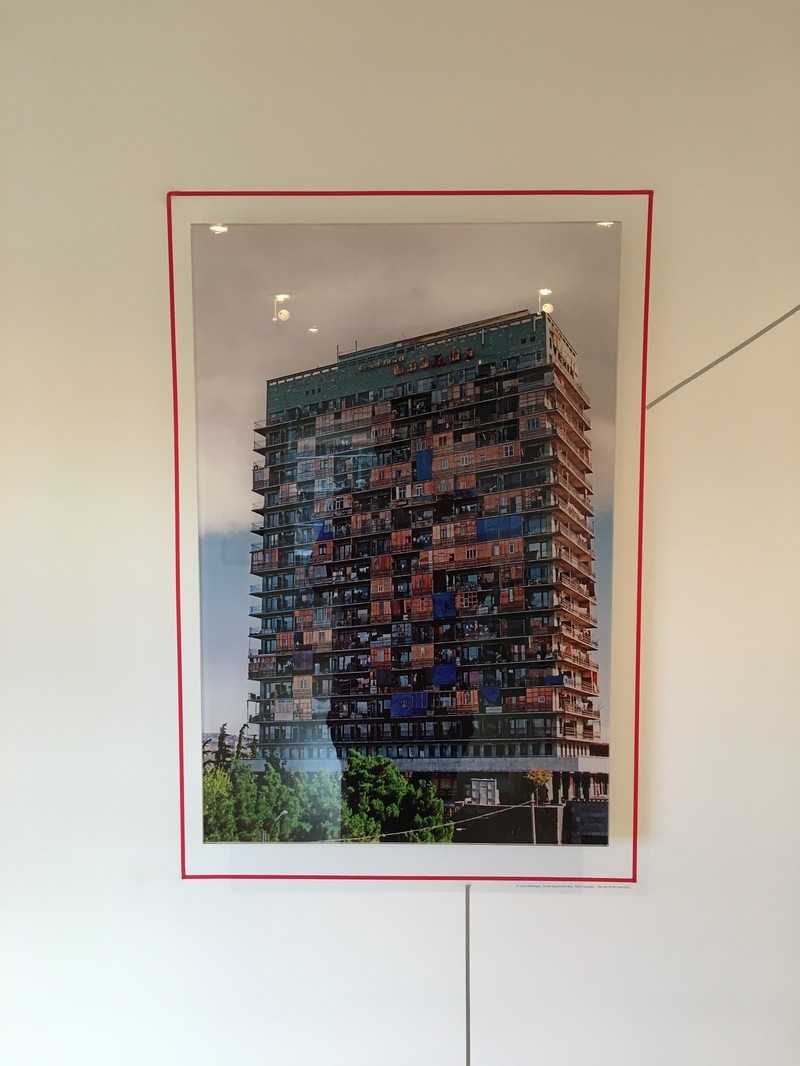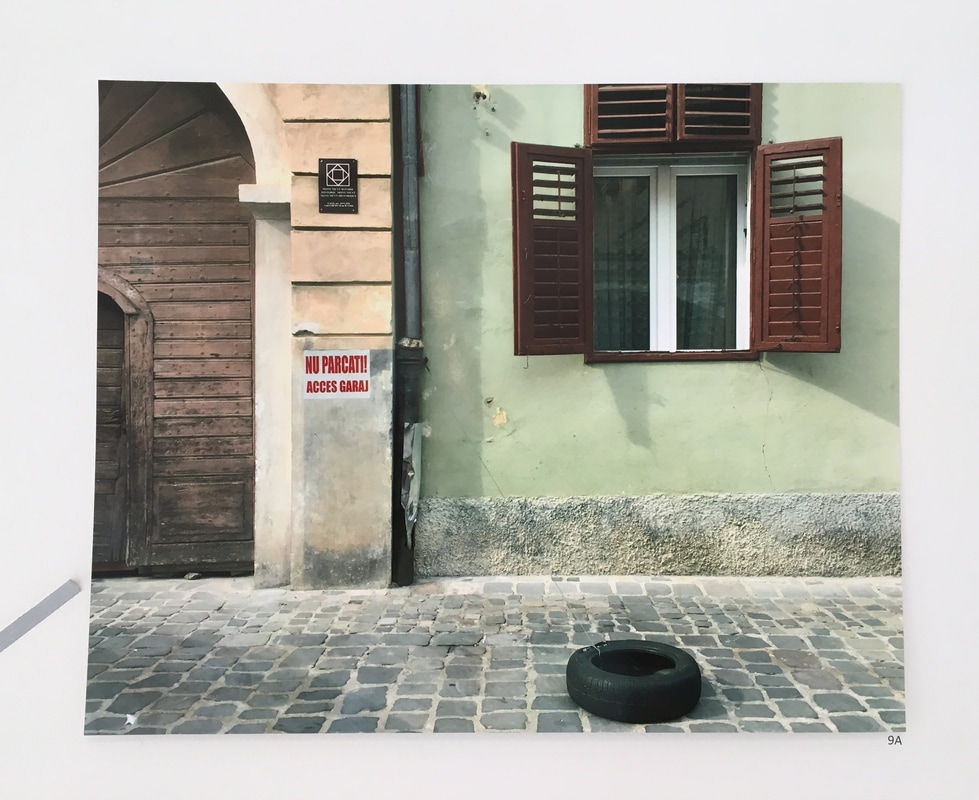Anchor 9
Vram Hakobyan, ‘Soviet Apartment Bloc, Tblisi, Georgia’
Included in the exhibition The Lay of the Land – 2011
|
9B. Victor M. Sosa
"A module, a fragment or an isolated structural element of a building block? A Building block which tides ideologies that support the global industrial complex of domination and control, that drives the industry of destruction, construction, transportation and chaos in the process of making new geographies. Ready made that pretends to construct stories, images and ideas related to dispossessions, process of impoverishment for future exploitation and mass ethnic displacement. The destruction and reconstruction of infrastructures are imminently one of the pillars of imperialism. Destruction of buildings and infrastructures means erase ideology, culture, and share the history that bonding people. Reconstruction by foreign countries means set in place invaders ideologies embedded in new buildings and infrastructures." 9C. For Photo of Original Hotel –
The Iveria Hotel was built in 1967 by the Soviet government as the premier hotel of the Georgian Soviet Socialist Republic. It was located at the geographic center of the capital Tbilisi on the western edge of Rose Revolution Square – named in 2005 after the Rose Revolution of November 2003 that marked the end of the Soviet era of leadership in the country. At 22 stories high it was visible from all other parts of the city. The architect was O. Kalandarashvili who designed it in the international style of modernism, but the distinctive balconies ringing its shaft were drawn from Tbilisi's vernacular tradition, where such balconies are a standard. A whole neighborhood of these balconied buildings occupied the original site of the hotel - at the foot of Rustavelli Avenue, the so-called Champs Elysees of Tbilisi. For the Main Photo - In 1992 the Iveria Hotel was turned into a ‘vertical refugee camp’ for displaced people from the Georgia-Abkhazia conflict. This unique transition resulted in over 800 uprooted Abkhazians living as residents but not citizens in the very center of Tbilisi – a constant and uncomfortable reminder to Tbilisians of the human consequences of war (which is why nearly all refugee camps are pushed to the extreme edges of cities). To increase living space many residents boarded up their balcony – it was not unusual for 2 to 3 families to occupy what was originally a single hotel room and balcony. For the Photo of Hotel Skeleton - In 2004 it was announced that ownership of the hotel had been transferred to private investors (in an unpublished deal that was part of the broader transformation of Rose Revolution Square from late Soviet vintage to capitalist heaven) – the residents were informed they were being evicted. The investors offered compensation of $7,000 per hotel room – which sounds generous considering that it equated to around half the cost of an average Tbilisi apartment on the outskirts of the city in 2004, but in most cases that $7,000 had to be shared between 2 to 3 families. And because many of the rooms had changed hands between families in the preceding 12 years, who exactly should be compensated? The deal was not optional or subject to negotiation, those who did not sign were evicted by force. The Iveria was cut back to its steel frame, the top floors were demolished and the distinctive balcony structures removed. For the Photo of the New Hotel - The Radisson Blu Iveria Hotel opened in 2009. It has 249 rooms, a spa, casino, conference facilities, a ballroom and an oxygen bar on the 18th floor. For the Photo of Shavnabada Monastery - At some point during 2005-2006 Georgian orthodox monks from the Shavnabada Monastery arrived and removed the doors, windows, woodwork and glass of two floors of the Iveria Hotel and took them to their monastery on Shavnabada Mountain, 30km south of Tbilisi, to build an annex. 9D. Ceramic block from Shallcross Manufacturing, a resistor factory in Collingdale, Pa brought in by Eric Shallcross
|




